Fascism Without Franco? Unacceptable.
Francisco Franco Bahamonde is often overlooked as one of the the most notable Fascist Dictators.
March 12, 2020
In World History we learned about the rise and fall of dictators; and why they fail to remain in power. Yet, throughout a year of exploring history’s most infamous fascists, Francisco Franco Bahamonde is the name of a man whose success as a dictator teaches us lessons which are completely ignored by our curriculum. We are exposed to the horrors and dangers of fascist dictators, but the explanation for societal appeal of the radical political ideology, forced or unforced, pertains to surface level human psychology; namely fear and mob mentality.
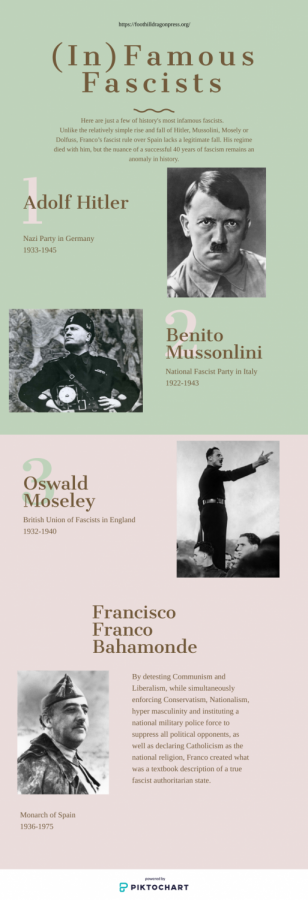
Franco ruled Spain as a fascist country for longer than any other regime in history. In fact, for a short period of time after his death, fascism in Spain carried on with Franco’s successor, Juan Carlos. The question of “why does fascism fail?” should be arguably just as important as “why did it last?” More importantly for us as high school students, the question to ask is: why does our education system omit Franco from history?
In no way do I wish to glorify Franco. Like many dictators, Franco violated the Spanish peoples’ human rights in violently charged attacks on “refugees in flight” resulting in the deaths of over 200,000 Spanish citizens. Women were oppressed as well and his regime ruled with the ideological premise of extreme classism. A vile man without question, however, historically Franco is undoubtedly the most successful Fascist dictator the world has ever seen. Reigning from 1936 until his death in 1975, his power was steadfast.
After a failed coup, Franco initiated the Spanish Civil War in 1936 until 1939. When the late dictator won the war, he instituted “Francoism” ideology to create a “monarchy” in Spain naming himself regent. By detesting Communism and Liberalism, while simultaneously enforcing Conservatism, Nationalism, hyper masculinity and instituting a national military police force to suppress all political opponents, as well as declaring Catholicism as the national religion, Franco created what was a textbook description of a true fascist authoritarian state.
However, the difference between Franco and Mussolini or Hitler, the two fascists who we are required to dissect in World History, is 20 years of successful authoritarian rule. Franco avoided the fatal mistake of fighting in World War II, the loss of which doomed fascist Italy and Germany. The self proclaimed Spanish monarch circumvented the hubris which became Mussolini’s, as well as Hitler’s ultimate downfall.
Moreover, Franco surpassed his Fascist peers in support from his citizens. Franco created a delicate facade of democracy through a series of legislation known as the “Fundamental Laws” shortly after his rise. The seven laws served as his Fascist constitution, while hiding the reality of utter authoritarianism from his citizens. Despite these laws being in place, Franco never established a true, comprehensive constitutional system. This, combined with Spain’s long history of political instability and social discontent, gave Franco great flexibility in ruling with an iron fist; with little push back from his citizens.
The presentation of Monarchical government was key for the Fundamental Laws to be supported by the citizens. Unlike Hitler’s Nazi party or Mussolini’s National Fascist party, Franco’s system of false monarchy, according to countrystudies.us, “was not [based on] a political party, and it did not have an overt ideological basis. Its membership included monarchists, Falangists, conservative Catholics, members of the armed forces, as well as business groups with (vested interests in continuity), technocrats, and civil servants.” Hence, support for Franco was unmatched by other fascists.
As his reign continued, Franco kept this relative support by loosening police rule, and liberalizing domestic policies a decade after World War II ended. Instead of ruling through mass fear, the Spaniard accommodated to political extremists on both sides through subtle liberalization. Eventually, Franco stepped away from policy execution. Accrediting Encyclopedia Britannica, “He maintained a careful balance among [his critical citizens] and largely left the execution of policy to his appointees, thereby placing himself as arbiter above the storm of ordinary political conflict.” This way, criticism fell directly unto his appointees instead of the dictator himself.
Franco’s reign, in its length and ideological delibracy, is far more complex to the reign of other fascists which we are required to study by order of the California School Board. It may be this complexity, in all its horror and fascination, that hinders the ability to teach a straightforward lesson on Fascism.
Unlike the relatively simple rise and fall of Hitler, Mussolini, Mosely or Dolfuss, Franco’s fascist rule over Spain lacks a legitimate fall. His regime died with him, but the nuance of a successful 40 years of fascism remains an anomaly in history.
However, this anomaly is one which adds depth to the concept and lesson of fascism; a lesson critical to why and how a fascist state could survive as long as Franco’s. Yet, throughout a year of studying communist and fascist dictators alike, Franco is completely overlooked in terms of importance. Is this because history in America is taught through an American lens, therefore Spain’s lack of involvement in World War II makes their history irrelevant to us as Americans? No, in fact America’s very real relationship with Spain politically was a huge controversy at the time of Franco. Truman condemned Franco and exempted Spain from any financial aid issued by the Marshall plan after World War II despite their financial struggle after international isolation.
Nonetheless, international relations improved due to decisions made within the Pentagon regarding the Cold War. Due to Spain’s strategic geographic location against the Soviet Union, America overlooked Franco’s oppressive, inhuman rule to fight communism and began trade with Spain. Perhaps the embarrassing hypocrisy of America’s relationship with Franco is why the dictator is omitted from our curriculum. However, we are taught about how America turned away Jewish people seeking refuge from Germany in World War II, so perhaps not.
The reason why we don’t include Franco in our World History curriculum is unclear, given his impact to Spain as well as the world, and the baffling modernity of his regime’s time frame. What should be taken away more than anything is that, as students, we need to be aware of how much history is omitted from our curriculum. A shame, truly, however it is the reality of limited time in a school year.
Editor’s Note: Piktochart credit: Owen Hanson

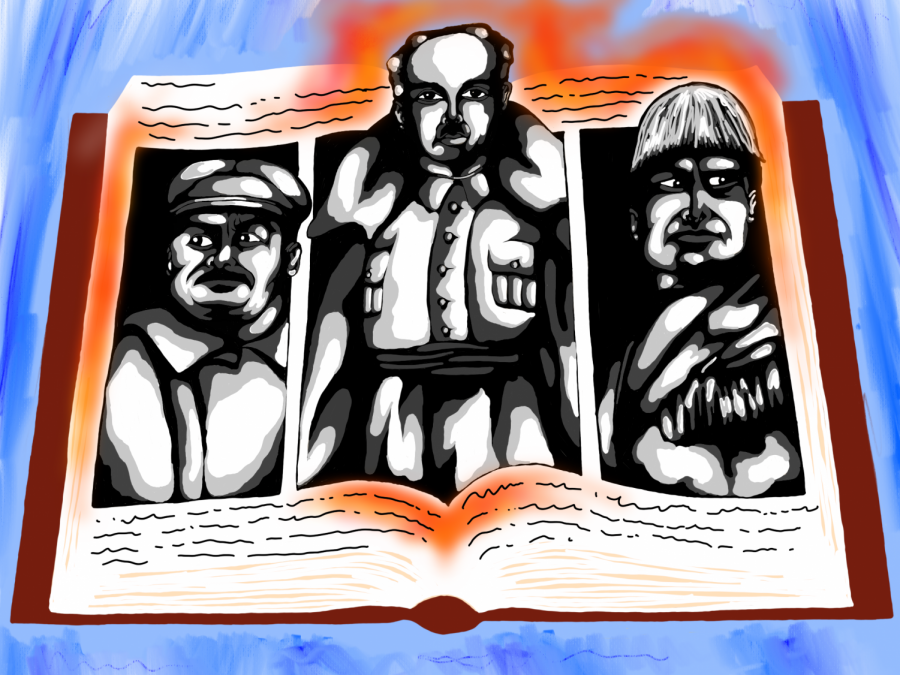





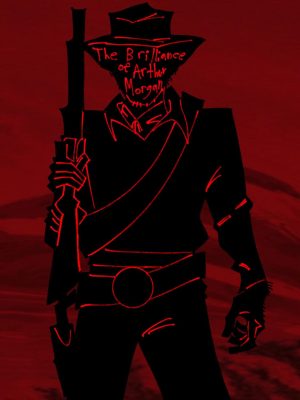

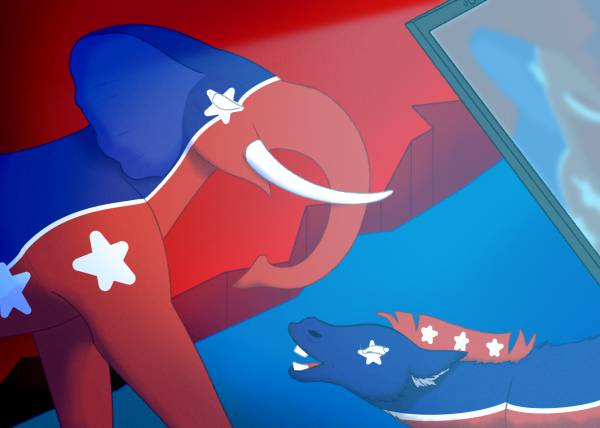








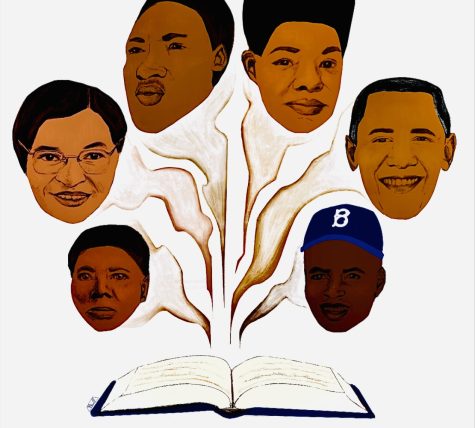




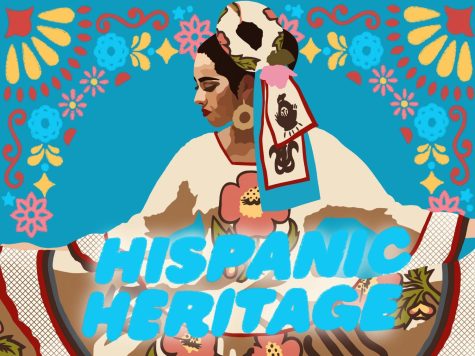







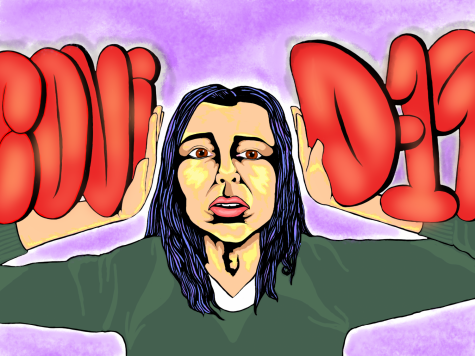



Kyeler • Mar 12, 2020 at 11:02 pm
Dude, this is awesome! Eloquently written. Bravo, Owen!
adler • Mar 12, 2020 at 8:00 pm
wow… loved this article